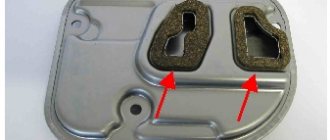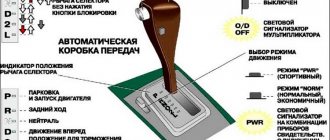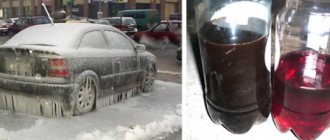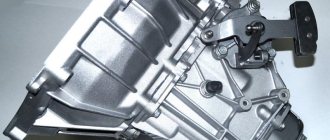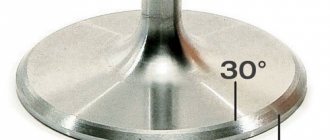An automatic transmission consists of numerous moving parts that operate in an oil environment. A special transmission fluid lubricates and removes heat from the metal rubbing surfaces of the automatic transmission. At negative ambient temperatures, the technical and operational characteristics of the working fluid deteriorate significantly. To avoid premature wear of transmission parts and components, it is necessary to properly warm up the automatic transmission in winter.
Features of operating an automatic transmission in winter
Automakers warn that it is necessary to warm up a car with an automatic transmission in winter before driving. There are several opposing opinions about whether it is necessary to warm up the automatic transmission in winter. Among experienced car owners you can find a variety of answers and recommendations. To draw the right conclusion for yourself and decide whether you need to warm up the automatic transmission in winter, it is recommended:
- become familiar with the design of your vehicle;
- features of the installed automatic transmission;
- study the technical characteristics of the gear oil used;
- remember when the next maintenance was carried out with the replacement of the working fluid and oil filter in the automatic transmission.
When frosts exceed -30°C, a difficult period begins for a car equipped with an automatic transmission. Under such difficult conditions, the working fluid becomes thicker and loses its useful lubricating properties. At the time of cold start-up, the technical characteristics of the transmission oil are significantly reduced. In this case, serious damage to the working units and parts of the automatic transmission is possible. Not only the car’s power unit needs thorough warming up, but also the transmission mechanisms, including the automatic transmission.
Why do you need to warm up an automatic transmission?
The answer to the question “is it necessary to warm up the car automatically” lies in familiarity with the principles, design and operating conditions of the automatic transmission.
Automatic clutch
The task of the transmission is to receive and transmit torque from the engine to the wheels. In a “classic” automatic, the engine power is received by a torque converter, which resembles a donut in an oil environment.
One half of the “donut” - the pump wheel - rotates with engine speed. Centrifugal force throws oil from the blades of the pump wheel onto the blades of the other half, the turbine, causing it to rotate. A reactor is installed between the wheels, which increases the engine torque by 2 - 3 times.
The torque converter absorbs and smoothes out engine vibrations and drives the oil pump, which continuously fills the donut with liquid. The pump also creates pressure in the valve body, which controls the gears. It follows from this that there is no pressure in the automatic transmission before the engine starts. Read
Do-it-yourself complete and partial oil change in the RENAULT Duster automatic transmission
The transmission fluid in the automatic machine serves as a working fluid that transmits the moment of force and “serves” the entire structure. That is why it is necessary to warm up the oil, not the lever.
Gear shift
Speeds are switched in a planetary mechanism with friction clutches connected to the turbine through a shaft. When an electronic signal is sent, a certain channel opens in the valve body through which oil passes. Pressure is created on the pistons, the friction discs are tightly compressed, and the planetary gear is braked.
To ensure that the transmission operates at the right time, the clutches and ATF composition are selected individually for each type of automatic transmission. In addition, the liquid lubricates and cools the rubbing elements of the structure.
Conditions for normal operation of automatic transmission
Unlike driving with a manual transmission, comfortable and safe driving with an automatic transmission depends on the quality and quantity of ATF:
| Oil condition | Consequences | Impact on automatic transmission operation |
| Dirty, old, overheated | Viscosity change, sedimentation, low lubricating, anti-corrosion and cooling properties | Fine suspension settles on the filters, the oil pump does not create the required pressure, and the efficiency of the torque converter drops. The clutches do not compress. The box shifts jerkily. The valve body channels become clogged and gear shifting is blocked. The machine overheats due to high friction and fails faster. |
| Underfilling | The pump will suck in air, which will cause the oil to foam. Additives in a diluted liquid lose their properties. | Insufficient pressure on the clutches leads to their slipping. Gears will shift jerkily or jump. Lack of lubrication and cooling will lead to overheating of the automatic transmission, increased load and rapid wear. |
| Overflow | The oil will foam and excess will splash out. The fluid level will drop, resulting in loss of performance. | |
| Mixing different oils or inappropriate composition | Additives are mixed. The chemical reaction is unpredictable. | There is no working pressure, insufficient lubrication and cooling of moving elements. The unit does not work properly and wears out quickly. |
It turns out that changing the properties of ATF leads to wear of the box. Manufacturers select fluid for their transmission based on engine load tolerance, viscosity grade, and type of additives that work under certain conditions. Therefore, in an automatic transmission, the oil must be warmed up in order to stabilize the pressure in the automatic transmission and “start” the operating properties.
How does ATF behave in cold weather?
Proponents of cold starting, who are against warming up the automatic transmission, argue that transmission oil is a unique technological substance that is not afraid of frost, theoretically it should not freeze even at very low temperatures, the fluidity of the material remains constant. In practice, everything looks completely different.
Important: ATP lubricant is made on a synthetic basis and contains numerous additives - additives. However, in severe frost, transmission fluid has increased viscosity, which has a detrimental effect on its properties. This is especially true for oil that is used in the machine without replacement for a long period. It is necessary and even necessary to warm up a box with outdated oil.
How to warm up a hydromechanical automatic transmission in a car
During periods of severe frost, motorists should treat vehicles more carefully. You need to pay special attention to the condition of the automatic transmission. If the temperature drops below -5 degrees, then additional procedures must be carried out before the trip. If the temperature drops below -15 degrees, then preparation before the trip is mandatory. Otherwise, you can damage the units and reduce their service life.
The automatic transmission is too sensitive to frosty weather. The critical temperature for such a mechanism is frost below 15 degrees. The universal oil that is inside the box loses its fluidity, which is why it cannot function normally for the first minutes. While driving, you can feel the selector shifting hard. The response to pressing the gas pedal is slower. Oil becomes thicker in cold weather and affects the performance of clutch packs. The latter are responsible for shifting the gearbox. If you do not warm up the box before the trip, the bags quickly wear out, and friction dust penetrates the oil and contaminates the valve body. All this leads to poor gear shifting, and in some cases, to the failure of the automatic transmission.
Another problem that can arise from thickened oil is damage to the torque converter. We conclude that in severe frost, warming up the automatic transmission is a mandatory procedure. However, the gearbox itself warms up much worse without movement.
Warming up while moving . Motorists who use manual transmission vehicles to warm up the engine and transmission turn on the engine, get out of the car and wait until the thermometer needle goes up. At this time, you can pick up a brush and brush off the snow from the car body and windows. After 5-10 minutes the car is completely ready to move. In such conditions, the automatic transmission cannot warm up.
In parking mode, the torque from the power unit is not transmitted to the shafts of the working planetary mechanisms. They do not rotate and can only receive heat from the engine. You can wait until the unit warms up a little, then turn on mode D and hit the road without sudden braking. The first few meters will be very difficult for an automatic transmission. The frozen machine begins to spin the gears, the oil quickly heats up and is pumped through the channels. Therefore, it is best to move at low speed and avoid speed surges. After 10 minutes, the gearbox reaches operating temperature and the vehicle can begin operating as usual.
Warming up in place . Sometimes situations arise when the box needs to be loaded initially. For example, if the yard is covered with snow and you need to skid when leaving, it is better to warm it up on the spot so as not to harm the mechanism. In order for the automatic transmission to warm up while parked, you need to move the selector to mode D or R. After this, you should hold the vehicle in place using the brake pedal. In this case, the torque from the engine goes to the torque converter and mixes the oil. The latter quickly heats up and transfers heat to other parts of the gearbox. A few minutes are enough for the oil in the system to reach operating temperature. Note that this technique can only be used if the car has a gearbox with a torque converter. Preselective robots cannot tolerate such maneuvers, since their design is similar to conventional manual transmissions.
Bottom line . Warming up the automatic transmission is an important procedure in winter. In severe frost, the mechanism does not have time to reach operating temperature. There are several ways to warm up the node.
How to properly warm up a car with automatic transmission in winter
Many car owners trust dealers' promises that their automatic transmission is a maintenance-free unit. According to their beliefs, the characteristics of transmission oil do not change even after long runs of more than 60 thousand kilometers. Such drivers often face the problem of car operation during the winter months. The parts and mechanisms of the automatic transmission also begin to behave inappropriately:
- vibrations, kicking, jolts appear when changing gears;
- gears do not change;
- the oil turns black, foreign fragments appear in its composition in the form of metal shavings, particles of friction linings;
- the oil filter stops performing its functions.
Where is the truth really and is it necessary to warm up the machine in winter? Experts answer questions.
The main thing is that warming up an automatic car with a torque converter type gearbox is a necessary procedure!
This is due to its design. You need to understand that transmission oil in an automatic transmission functions as a working fluid both for lubrication and cooling of parts, and in order to transmit torque to the shafts and clutch connections. Moreover, to successfully warm up an automatic car in winter, two conditions must be met. Firstly , all channels of the valve body must be filled with clean ATF fluid. Used oil always contains microparticles that impede its circulation and reduce the efficiency of performing its functions.
Secondly, the system must have the required level of oil pressure . If these rules are not followed, shocks and jolts will be felt when changing gears, which will lead to rapid wear of the clutches. Due to low pressure, the clutches will close with great delay, the friction layer will quickly be erased, and suspensions will be transferred to the valve body channels with all the ensuing negative consequences.
Anticipating a barrage of questions, you can immediately answer those who are still against warming up.
Why warm up if:
· ATF fluid is actually oil and does not freeze?
Yes, it does not freeze, but in the cold it thickens greatly, especially in cases of significant mileage. And ATF crystallization processes are a direct path to malfunction.
· Does automatic transmission parts warm up from the power unit?
Right. Heat exchange actually takes place. But we must take into account the fact that in the cold this process will take a very long time, which will lead to unnecessary waste of fuel.
· Are automatic transmission oil seals able to withstand high pressure?
That's right. Only under “cold” start conditions will not only the oil seals, but also other automatic transmission parts be subjected to high loads. And, as you know, overloading any part is not good for it.
Does the car manufacturer require warming up the automatic transmission?
Indeed, as the temperature drops to negative levels, the oil in the gearbox housing continues to remain liquid. With only one caveat, viscosity increases significantly in cold weather. This is especially true for lubricants with a mileage of several tens of thousands of kilometers. When cold, such a product has worse performance indicators than when warmed up.
Positive and negative aspects of warming up an automatic transmission. Car enthusiasts who prefer to forego preheating the automatic transmission argue with the following facts:
- – durable, modern oil seals can withstand additional pressure;
- – increased wear of gears when switching them in idle mode;
- – while the car is moving, the oil will naturally warm up faster;
- – the box will warm up from the hot engine;
- – ATF fluid is initially designed for negative temperatures.
Is it necessary to warm up the automatic transmission in winter, why and how to do it correctly?
Most car owners seem to have made up their minds about warming up the engine and warm up the engines correctly: a little at idle and then at low load while driving. In general, it is clear why warming up is needed and how “cold” loads affect the engine’s service life. Public consensus has yet to be reached regarding ACP. Someone accelerates in “parking”, someone goes through all the selector positions while holding the brake pedal, someone starts moving at low speed... But how is it really necessary, and is it even necessary at all?
Let's start with the main thing: warming up is necessary. The reasons for this are even more obvious than in the case of the motor. As the oil temperature increases, the viscosity and lubricating properties change, and this relationship is nonlinear. For those wishing to look at the graphs, we recommend one of our previous publications on engine oil viscosity. For transmission oils, including ATF (automatic oil), the relationship is the same: the viscosity of cold oil is hundreds of times higher than the viscosity at operating temperature, which greatly increases the load on a number of gearbox components. As a result, the oil pump, solenoids, torque converter blades and much more suffer from cold operation.
No need to warm up
Now this version has a lot of supporters. Actually, I’ve already listed a lot from above, but let’s go point by point:
- ATF fluid is PERFECT and does not thicken much
- Warming comes from the engine (even just from the body)
- If you start moving right away, the oil inside the machine will warm up much faster.
- There is no need to drive through gears; this is additional wear and tear.
- Seals in automatic transmissions can withstand any pressure
These are the main arguments of opponents of heating, but there are also supporters, and I am one of them.
How to drive an automatic transmission with a trailer
Driving with a trailer is similar to towing another car, only the weight of the load is less. In any case, the automatic transmission will work under increased load. For this reason, you must also comply with several simple requirements:
- If you frequently drive with a trailer, it is recommended to install an additional automatic transmission radiator to cool the oil, since under load it gets very hot and the parts wear out faster.
- If you plan to tow a trailer over long distances, then develop driving skills in low gears 2 and 3. In this state, the box is less loaded and the parts do not wear out as much.
- The more often you tow other cars, the more times you will have to turn to the services of a car service to repair your transmission: change the filter, oil and perform other work. Use only high-quality transmission fluid.
- Drive at a maximum speed of no more than 4500 rpm and do not press the gas pedal all the way.
How to stop driving with automatic transmission correctly
Stopping movement can be considered as braking. It comes in three types depending on the situation:
- engine braking, used in case of brake system failure;
- emergency, used in moments of sudden stop when the need arises;
- normal, the driver smoothly presses the brake pedal and the automatic transmission gradually switches gears from higher to lower.
To bring the vehicle to a complete stop from a driving position, apply the brakes, either hard or soft, and be sure to move the gear selector to the “P” position.
Important . Some people advise switching the automatic transmission to N mode, but the wheels are not locked and then the car can roll on a slight slope. Always move the lever to the "P" or park position.
Common mistakes when driving an automatic transmission
An automatic transmission is a complex unit that requires proper and careful handling. This is important because repairing it is expensive. To avoid losing money, do not do the following:
- Do not coast; this will cause the automatic transmission to overheat.
- Do not shift the transmission into reverse or park, as this will damage the unit.
- When stopping the car in a parking lot, first activate the handbrake, then turn on the “P” mode.
- Do not tow a vehicle with heavy weight or at speeds exceeding 40 km/h.
- Do not press the gas pedal when the selector is in zone N.
Some tips for operating an automatic transmission in winter
It is easier to prevent any problem than to fight it. Following a few very simple rules will help your automatic transmission survive the winter without loss.
Quiet ride
Do you like aggressive driving? In winter, you will have to “step on the throat of your own song” in order to preserve the automatic transmission. Sharp acceleration and braking have a very negative impact on the condition of the friction belts, thanks to which gears are changed. Movement “a la Schumacher” will sooner or later lead to a clutch breakage.
Special modes for winter
If your car's automatic transmission has Winter or Snow modes, be sure to use them. The car starts from second gear, wheel slipping is eliminated. The transmission warms up quickly. In the warm season, this mode cannot be used, otherwise the box will overheat.
Timely replacement of transmission fluid
Manufacturers advise changing the automatic oil after 60,000 km. If, before the onset of winter cold, the box has passed more than 40,000 miles since the last ATF change, it is better not to risk it and replace the fluid and filter. Automatic transmission repair will cost more. Experts from the “Main Road” program give some advice on how to care for your checkpoint.
Use of special additives
To protect the automatic transmission from wear and prolong the service life of the unit, we recommend using a special Suprotec “Automatic Transmission” additive or one of its analogues. This product is added to the transmission fluid, but does not change its properties. The tribological composition interacts with mechanical parts, so it can be added to ATF of any brand.
When added to gear oil, the Suprotek product creates a layer of metal particles on the surface of friction pairs. The geometry of the oil pump parts, transmission gears and bearings is partially restored. A layer of microparticles helps maintain a denser oil film, protecting parts from wear.
The product restores the performance and pressure of the pump, removes deposits in the channels and valves of the valve body. This optimizes the operation of the machine. Friction packs work correctly, jerking, kicking and other manifestations of problems are eliminated.
Of course, if the wear of the automatic transmission is already significant, no auto chemical products will save you. The Suprotec composition helps prevent wear, eliminates minor and medium-sized faults, but does not perform miracles. The product will help the box survive a frosty winter or hot summer, but it is not capable of bringing a dead unit back to life.
Additive for automatic transmission and variator (CVT) "Suprotek Automatic Transmission"
Restores the oil pump and oil pressure in the automatic transmission valve body, which eliminates shocks and jerks when shifting gears. Reduces hum and vibration. In CVTs, it restores cones and chain tension.
more reviews
To achieve a lasting effect of restoration and protection of machine components from wear, it is recommended to add “Automatic Transmission” product at each scheduled ATF fluid replacement. You can use other formulations of a similar type, but the Russian product has a noticeably higher price-quality ratio than its competitors.
How to start driving an automatic car in winter
One of the main advantages of a hydromechanical transmission is a smooth, jerk-free start to movement. In a manual car, a comfortable start depends on the skill and experience of the driver and the condition of the clutch. The automatic machine will gently move the car.
If the automatic transmission allows you to forcefully engage first gear (for example, boxes with the “Tiptronic” function or if there are modes “1”, “2”), then you should use this.
Automatic transmission with Tiptronic function - T-shaped branch on the right side of the box for manual control.
The beginning of the journey - the first 400-600 meters - drive in first, then second gear, maintaining engine speed of about 2000 rpm. Then turn on the automatic mode and continue driving in a calm style, without pressing the accelerator pedal too hard. After 8 - 10 km of travel, the automatic transmission is ready to operate normally, changing from gear to gear smoothly, without bumps or jerks. This is another plus of automatic transmission.
Warming up the automatic transmission and engine is not a complicated operation. They do not take much time, but they significantly facilitate and lengthen the life of the power unit and hydromechanical automatic transmission. But if engine repair is a proven operation and is carried out by many repair shops, then automatic transmission repair is a very, very expensive procedure, carried out only by specialized enterprises, and the result is not always positive.

